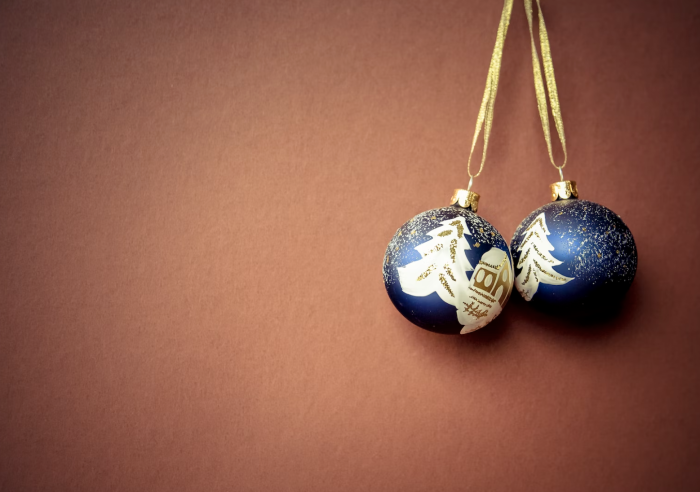Every year, about this time, we get bombarded with commercials and ads promising that our friends and family will only truly love us—or have a really Merry Christmas—if we stuff their stockings with the latest computer devices, extravagant toys, and piles of expensive diamonds.
But you know what? It just isn’t true. My grandmother told me so.
The early 1940s were a tough time for a lot of people as the Great Depression had not completely petered out and a terrible war was roaring overseas. In the winter of 1941, my grandparents were living in a small wood stove-heated cabin with their four little children deep in the Alberta countryside.
And they were penniless.
With the farm laying buried under impenetrable snowdrifts, Grandpa tried to make his winter living by sawing firewood for the neighbors with a rig he made out of his tractor. But work was scarce, and any living wage was meager. Come Christmas Eve, there was nothing in his pockets but holes.
Fortunately, back in those days it was possible to put food on the table virtually for free.
Grandpa had a hunting rifle that he used to bring home venison and other wild game; and Grandma had a cellar of potatoes and vegetables left over from her summer garden. They even had a milking cow. So, there would be a meal.
Christmas trees were free, too. The forest was full of them. When they decorated theirs with pinecones, home-made paper chains, and swatches from the sewing bag, it was a lovely thing to see.
But as for Christmas treats and goodies—there would be none. No, Santa would not visit the Magnusson household that year.
Then, on Christmas Eve day, a ray of hope shone its way into the yard in the form of a neighbor looking to hire Grandpa to cut his firewood. Work!
Grandpa, of course, willingly did the work, but when he got home that night he was more than a bit crestfallen. He had only been paid a fraction of what he was owed. After all, times were hard for everyone. He knew his neighbor would pay him the rest as soon as he could afford to, but it would be too late for Christmas.
He handed Grandma the tiny sum, mumbling, “It’s only two dollars.” But Grandma was a wise old woman of 23 years of age.
“Yes,” she told him sagely. “But two dollars is better than no dollars.”
She bundled herself up warmly, and told Grandpa to watch the stew she had on the stove for supper and take care of the kids. She stepped out into the cold, wintery night, and hurried off to the general store—a chilly two-mile walk away, her path lit only by the moon.
A little later, the small bell attached to the overhead door hinge jingled as she stepped into the store. She looked around. From the sight of this place, you’d never know there was a thing wrong with the world. Pretty decorations glittered from every corner and Bing Crosby crooned from the old radio behind the counter.
She took only a second to enjoy the scene. Then she pulled off her mittens and set out to see what she could find.
Her children came first. She selected toys for each one. For her seven-year-old daughter, she picked out a coloring book and crayons. For her older boy, she chose a wind-up toy. For her littlest girl, a little tea set. And for her baby boy, she found a stuffed doggie.
At a few cents each, that had taken up most of her little budget, but there was still enough left for some peppermints, nuts, and oranges for the family to share. Her purchases now stacked up on the counter, Grandma quickly did the math in her head. She had spent exactly $1.80 of her money. Was there anything else she could do with that last 20 cents?
As she wandered around the store, she was drawn toward a display of shimmering Christmas ornaments, wreaths, garlands, and bells—most well beyond her budget.
But then, she saw it. A plain, little cardboard box divided into small sections like an egg carton. In each section was a shiny little blue ball with a little string to hang it on the tree. There were 12 balls in all. Handwritten along the side of the box in charcoal pencil was the price—20 cents. Exactly the amount she had left. She picked it up and headed for the front counter.
She’d done it! She’d put together a Christmas for her family on only two dollars. And as she recounts, it was as happy and jolly a Christmas as any she’d ever known.
Sixty-five Christmases later, we all sat around at Auntie’s house hashing over the old story once again. This was the same Auntie who had once received a little tea set. Grandpa had been gone for many years now, and all the children had kids and grandkids of their own. Grandma was elderly and beset with senile dementia, robbed even of the memory of her own kids’ names.
“You know,” Auntie said suddenly, “I still have those blue balls.”
She rummaged around in the closet for a few minutes and finally returned to the living room holding the plain little cardboard box. On the side we could still clearly see the words twenty cents written in charcoal, just as Grandma had described it.
Auntie knelt before Grandma’s wheelchair and removed the lid from the box. Only one of the balls had been lost over the years. The other 11 still sparkled as they must have done all those years ago in the light of the general store.
“Mom, do you remember these?”
Grandma looked at them for a long, quiet moment. She reached out with one finger and gently stroked one of the balls. Then she uttered one of the few complete sentences she had spoken all night.
“Oh sure! Those are the blue balls we got the year we only had two dollars to spend.”
Somehow, that Christmas story had come to mean more to our family than the snazziest computer or the shiniest diamonds ever could.
You’ll never put together a Christmas for two dollars today, of course. But remember, you don’t have to bury your loved ones in a mountain of extravagant presents to give them a happy Christmas.
After all, 65 years from now, when they’re telling their stories, that’s not what they’re going to remember.
~
Please consider Boosting our authors’ articles in their first week to help them win Elephant’s Ecosystem so they can get paid and write more.
~

 Share on bsky
Share on bsky







Read 6 comments and reply